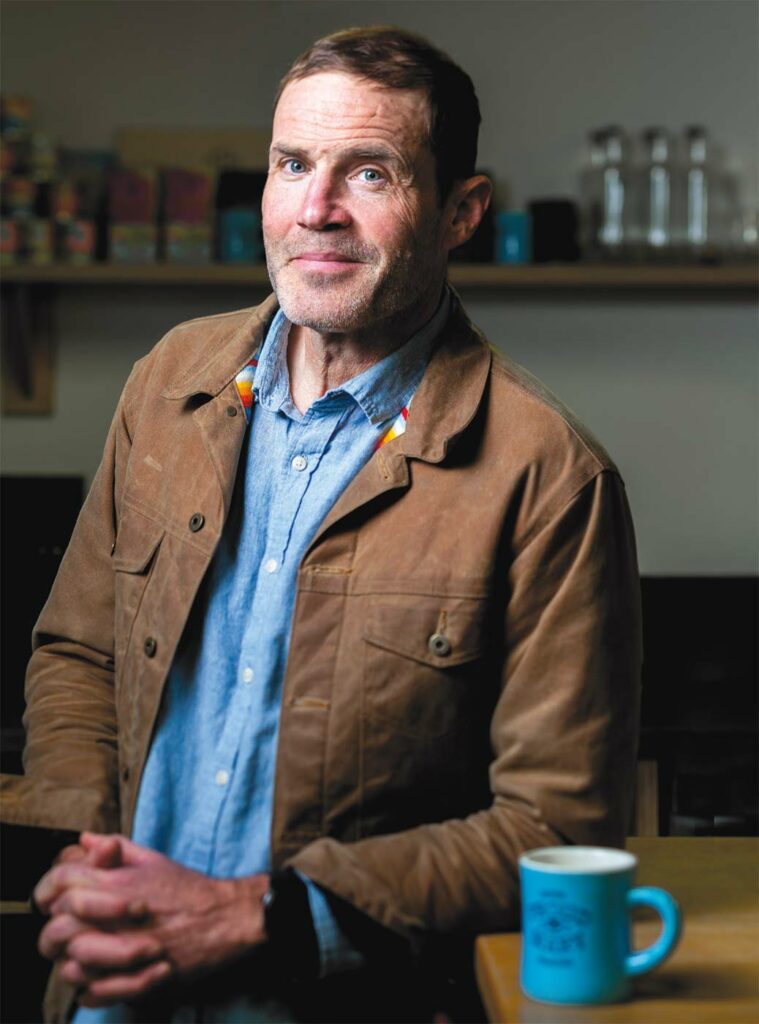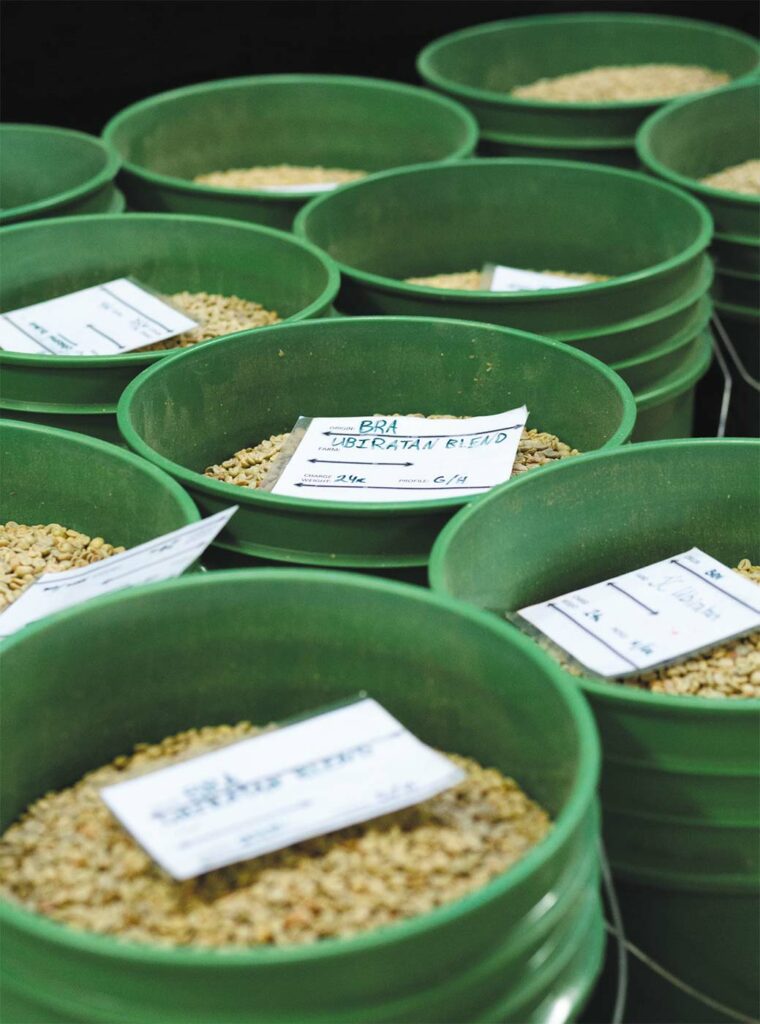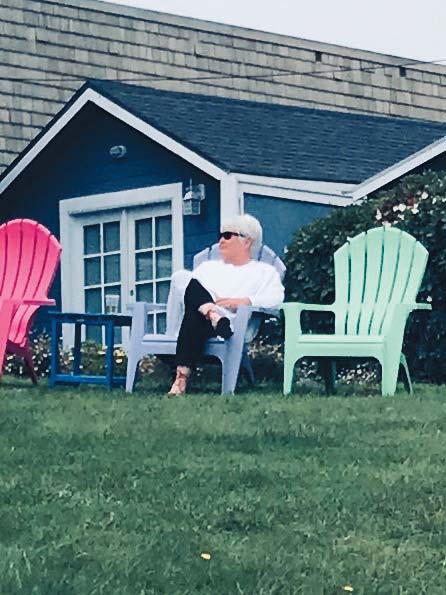
When we first moved to Portland, living only blocks from NE Alberta, we became regular customers at the Proud Mary Cafe. What drew us there was the coffee, the food, the service, and the ambiance. Nolan Hirte, the founder and owner, opened the Portland cafe in 2017. In the years since then, it has become tremendously popular with the Portland coffee crowd. Journalists reported stories about the coffee shop/cafe; a quick Google search tells the story. While visiting the cafe, we met Matt Lounsbury, the manager, with whom we engaged in an animated conversation, which resulted in an invitation to join him in a cupping. Having no idea what this meant, I was intrigued.
Our cupping experience occurred at their roasting facility. We found ourselves in an industrial building on Portland’s east side. Here is where the wizardry happens. To help us better understand how coffee roasting occurs, Matt introduced us to the Head Roaster for Proud Mary Coffee in Portland Victor Reyes. His chemistry degree informs his work, which involves complex and precise judgment. Lounsbury and Reyes explain how various coffee beans look before and after roasting. The green beans finish as light brown to dark brown, depending on the preferred roasts. The towering roasting machine has myriad moving parts and a computer screen. The moisture gets “cooked off as the beans pass through it.” During this process, the roaster listens for loud pops indicating that the beans have reached the first crack stage. The rest of the roasting process depends on how light or dark you want your beans. The beans undergo chemical changes and break down as the process continues. Though the machine is monitored through a computer screen, there is no substitute for human eyes, ears, and noses. The roaster checks the aromatics and appearance as the roasting continues so that the beans reveal their profile and arrive at the desired perfection point. Some coffees take less time; others take more time. Green to dark, the roasting process brings coffee to a desirable smell and taste.
We followed the two into the walk-in cooler, where Lounbury showed us stacks of bagged beans. He pointed to bags of specialty beans with high price tags, including bags for thousands of dollars. These small lots provide specialty beans for their cafe’s $45 cup of coffee, which seems reasonable considering the entire process, from the growers to the roaster. Proud Mary Coffee wants to offer the experience of enjoying coffee at the highest possible levels, including heirloom varietals. The coffee’s quality is promoted by the farmers’ thoughtful preparation for shipping and protective transport practices with temperature-controlled holds and careful handling when they arrive.

Loundsbury, an avid coffee drinker, watched the growth of the coffee industry, observing that American coffee drinkers have gone through three waves of coffee drinking. The first wave of coffee was the lowest quality; think Maxwell House, Folgers, or Yuban. Nobody talked about the country of origin, farm, or how the coffee was processed. The focus was on convenience. The second wave of coffee arrived in the late 1900s when the cafe culture was growing in the United States. Coffee drinkers first met baristas, who introduced them to a wider variety of coffee and talked about single-origin coffees, countries of origin, and higher-quality coffee. That’s when we all started ordering caffe mochas and lattes. The term “third wave of coffee” was coined in 1999 when baristas began testing the market with lighter roast levels and bringing new, unfamiliar flavors out of well-grown coffees. Consumers realized that there was more to coffee than they first realized. They started ordering coffee based on aromatics and roast profiles. That’s when we started seeing hearts floating on our cup of coffee. We discovered the pour-over method, the Chemex method, and the French press method. We have developed a great deal from those first “convenience coffees.”
When it was time for the cupping, Matt led us to a table with six settings. Each setting included cupping spoons, rinse bowls, spit cups, cups from which to spoon the coffee, and cards identifying each coffee we tasted. As Matt said, “going from mild to wild and crazy town.” He instructed us, “Stand with your nose extra close to access aroma. Be sure to rinse your spoon between tastes, put it back in the cup, stir it around, slurp to aerate, and taste again.” We were encouraged to “grab the spoon, dip it in the brewed coffee, and slurp it”; generally, the louder the slurp, the more coffee is drawn across your palate. We sipped and slurped our way through samples from the honey process, meaning the seeds are dried and fermented in their sticky mucilage; the natural process, which means the coffee beans are dried in the sun; and the anaerobic process, which means the cherries are placed in large barrels of water and sealed from oxygen for 48 to 72 hours. The three different processes yield unique profiles. The coffees we evaluated were Cerro San Luis Finca El Venado from Costa Rica, Benjamin Paz Geisha from Honduras, Finca Toño from Costa Rico, and El Indio from Colombia. Matt explains that their most celebrated coffee is Geisha, often called the “champagne of coffee.” Most Geisha coffee is grown between 4,600 to 5,900 feet above sea level. This altitude provides a cooler climate, which slows the maturation of coffee cherries and allows them to develop more complex flavors. Geisha coffee is exclusive, and that quality comes at a premium price. It is often sold at record-breaking prices at auctions, with some lots selling for over $1,000 per pound. Lounbury joked that purchasing the finest coffee can feel like making a car payment, but you have experienced the best in the world.
Learning more about a beverage many of us take for granted was intriguing because it is an all-senses experience. Like wine tasting, coffee tasting is very personal. Just as no one can tell you what wine to like, no one can tell you what coffee to like. The language of the two is similar: noting the soil and location of the orchard, treating the fruit with great care through sustainable orchard practices, observing the smells and, tastes, and colors after roasting to see which types we enjoy. We often do coffee a disservice by grabbing a cup on the way out the door. Take time to savor. Your personal preferences and experiences are what make the coffee-tasting journey unique and enjoyable.

